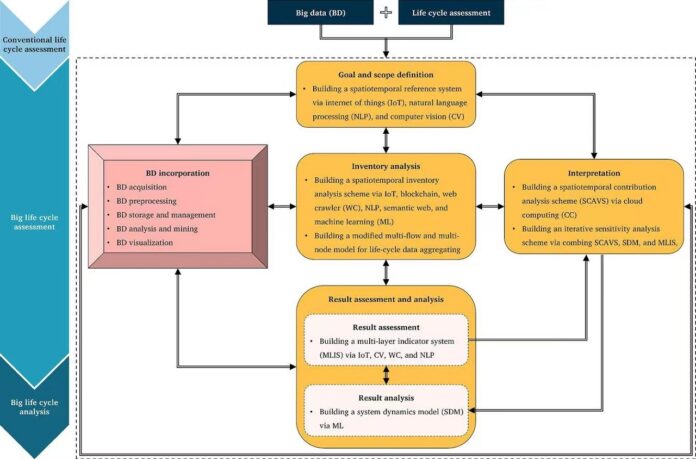The life cycle assessment (LCA) method focuses on measuring indicators and making environmental decisions. It is a popular method for calculating a product’s environmental, economics, social, and other multidimensional impact potential. Its global and static viewpoints must adequately capture details of spatiotemporal fluctuations.
On the other hand, traditional LCA methodologies are frequently isolated, making it difficult to uncover links and interactions between multidimensions.
For complex systems with substantial spatiotemporal heterogeneity, this restricts the application of LCA. A methodology that can effectively quantify multidimensional linkages and spatiotemporal fluctuations is required to reduce the gap.
A research group from the Qingdao Institute of Bioenergy and Bioprocess Technology (QIBEBT) of the Chinese Academy of Sciences (CAS) led by Prof. Yajun Titan has proposed a methodological framework called big life cycle analysis (BigLCA), which thoroughly couples each stage of big data and LCA methodology.
The team developed a big life cycle analysis (BigLCA) methodology that thoroughly connected each stage of big data and the LCA approach. BigLCA created a spatiotemporal inventory analysis framework based on a modified multi-flow and multi-node model to analyze and integrate huge amounts of data related to many aspects.
The study, published in Ecological Indicators, improved conventional LCA to life cycle analysis, boosting the efficacy of decision-making and the precision of indicator assessment.
Prof. Yajun Titan said, “BigLCA upgrades the traditional life cycle assessment to life cycle analysis, from description to prediction, from mutual independence to mutual correlation between dimensions, from abstract expression to spatiotemporal expression; it provides a new approach to improve the accuracy of indicator measurement and the effectiveness and applicability of decision-making.”
The strategy and framework may help to understand and debate the use of BD in LCA, providing a novel approach to improving the accuracy of indicator measurement and the effectiveness and applicability of decision-making.
Journal Reference:
- Kechang Xie, Junjie Li, et al. Coupling big data and life cycle assessment: A review, recommendations, and prospects.Ecological Indicators. DOI: 10.1016/j.ecolind.2023.110455
